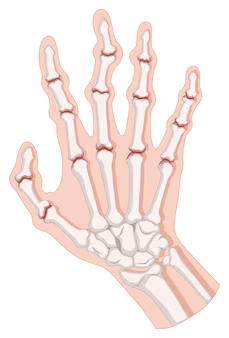
Rheumatoid arthritis: an overview of the condition:
Rheumatoid arthritis (RA) leads to pain and swelling in the joints. When the immune system doesn’t work right, it attacks the synovium, the lining of the joints. The disease usually affects the hands, knees, or ankles, and it usually affects the same joint on both sides of the body, like both hands or knees. But RA can also affect other body parts, like the eyes, the heart, the circulatory system, and the lungs.
RA affects more women than men, but no one knows why. It usually starts in middle age. RA is more likely to happen if someone in your family already has it.
If you are someone dealing with rheumatoid arthritis, seek medical help from a rheumatoid arthritis specialist in Coimbatore.
The signs of rheumatoid arthritis that help you identify:
People with RA may not see redness or swelling in their joints in the early stages, but they may feel tenderness and pain.
These signs may point to RA:
- Joint pain, tenderness, edema, or stiffness lasting at least six weeks.
- Morning stiffness lasts at least 30 minutes.
- Multiple joints are impacted.
- Small joints (wrists, particularly hand and foot) are typically affected first.
- A condition that affects the same joints on both sides of the body.
People with RA often feel very tired, and some may also have a low-grade fever. The signs of RA can come and go. A flare is when you have a lot of inflammation and other symptoms.
A flare might last days to months.
The treatment that can help overcome the condition:
Though there is no evident cure for the condition, there are a few Rheumatoid Arthritis Treatment methods that can help reduce the symptoms and lead a normal life.
Medications:
Certain prescribed medications can relieve the signs and can help reduce the pain caused by rheumatoid arthritis.
Therapy:
Your doctor may send you to a physical or occupational therapist who can teach you exercises to keep your joints flexible. The therapist may also suggest new ways to do easier everyday tasks on your joints.
With the help of assistive devices, it may be easier to avoid putting pressure on painful joints.
Surgery:
If medicines don’t stop or slow the damage to your joints, you and your doctor may decide to have surgery to fix them. Rheumatoid arthritis surgery might help you be able to use your joint again. It can also reduce pain and make things work better.
How to lead a pain-free life after being diagnosed with rheumatoid arthritis:
You can get rid of pain and swelling with many natural remedies. Most of these are homeopathic treatments that work in addition to the pain medicine your doctor has given you.
The methods below are meant to help joints work better and ease the pain of arthritis. See which one suits you best.
Meditation:
By focusing on your breath and taking deep breaths, you can help reduce inflammation. Remember that stress can make arthritis pain worse, and meditation is a great way to calm the mind and body. Try it out.
Exercise:
When you have joint pain, the last thing you might want to do is exercise, but it’s good for you. Exercise keeps the blood flowing well and can reduce swelling. You should combine strength training (building muscles to support your joints) with aerobic exercises like swimming, cycling, or running.
Swimming is great because it works out your whole body without putting stress on your joints. People with arthritis can also benefit from yoga. It’s a mix of breathing exercises, meditation, and low-impact exercises. Try yoga if you only have a little time.
Using heat pads and cold pads:
If you’ve played sports competitively, you know that hot and cold treatments can help loosen up tight muscles and keep them from getting stiff. Additionally, it can be used to lessen arthritis discomfort. The best way to treat rheumatoid arthritis is to use hot pads and ice packs. When you have pain or swelling in your joints, ice packs can help. Get an ice pack or crush some ice and put it in a cloth. Hold it against the sore joint for about 15 minutes a day. Use a hot water bottle or heat pad instead of this. The heat relaxes your muscles and brings more blood to the hurting joint.
Use a walking aid:
In severe cases, you should take as much pressure off your inflamed joints as possible. If your feet or knees hurt from arthritis, use a cane or walking stick to give them a break.
Visit the Best Rheumatology Hospital in Coimbatore to find various options to relieve symptoms of the condition.
Can rheumatoid arthritis cure on its own?
Rheumatoid arthritis doesn’t go away. This issue will persist for the next of your of your life. But there may be times when you don’t feel sick at all. These times when you feel better may come and go. This is called remission.
Still, the damage that RA does to your joints will always be there. If you don’t go to a doctor for RA treatment, the disease can damage your cartilage and, eventually, your joints in a way that can’t be fixed. RA can also hurt organs like the heart and lungs.
Specialists can help you understand rheumatoid arthritis treatment cost to help you decide.
Prognosis of the condition:
Having rheumatoid arthritis can make you feel like you’re on a roller coaster of pain and tiredness for the rest of your life. It’s important to talk to your doctor about how you feel and what you’re experiencing.
Along with X-rays and blood tests, what you say about your quality of life will help you figure out how to treat yourself. Your doctor or nurse will look at your symptoms and suggest a treatment plan that fits your needs. Most people with rheumatoid arthritis can take care of it and still do the things they enjoy.